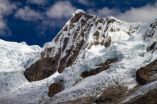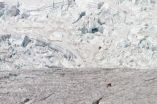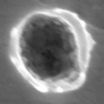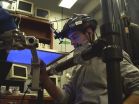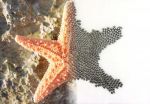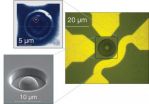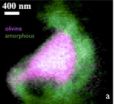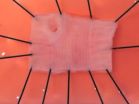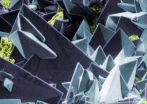(Press-News.org) This news release is available in German.
The ongoing global glacier retreat causes rising sea-levels, changing seasonal water availability and increasing geo-hazards. While melting glaciers have become emblematic of anthropogenic climate change, glacier extent responds very slowly to climate changes. "Typically, it takes glaciers decades or centuries to adjust to climate changes," says climate researcher Ben Marzeion from the Institute of Meteorology and Geophysics of the University of Innsbruck. The global retreat of glaciers observed today started around the middle of the 19th century at the end of the Little Ice Age. Glaciers respond both to naturally caused climate change of past centuries, for example solar variability, and to anthropogenic changes. The real extent of human contribution to glacier mass loss has been unclear until now.
Anthropogenic Causes
By using computer simulations of the climate, Ben Marzeion's team of researchers simulated glacier changes during the period of 1851 and 2010 in a model of glacier evolution. "The results of our models are consistent with observed glacier mass balances," says Marzeion. All glaciers in the world outside Antarctica were included in the study. The recently established Randolph Glacier Inventory (RGI), a complete inventory of all glaciers worldwide, enabled the scientists to run their model. "The RGI provides data of nearly all glaciers on the Earth in machine-readable format," explains Graham Cogley from Trent University in Canada, one of the coordinators of the RGI and co-author of the current study.
Since the climate researchers are able to include different factors contributing to climate change in their model, they can differentiate between natural and anthropogenic influences on glacier mass loss. "While we keep factors such as solar variability and volcanic eruptions unchanged, we are able to modify land use changes and greenhouse gas emissions in our models," says Ben Marzeion, who sums up the study: "In our data we find unambiguous evidence of anthropogenic contribution to glacier mass loss."
Significant Increase in Recent Decades
The scientists show that only about one quarter (25 +/-35 %) of the global glacier mass loss during the period of 1851 to 2010 is attributable to anthropogenic causes. However, during the last two decades between 1991 and 2010 the fraction increased to about two thirds (69+/-24%). "In the 19th and first half of 20th century we observed that glacier mass loss attributable to human activity is hardly noticeable but since then has steadily increased," says Ben Marzeion. The authors of the study also looked at model results on regional scales. However, the current observation data is insufficient in general to derive any clear results for specific regions, even though anthropogenic influence is detectable in a few regions such as North America and the Alps. In these regions, glaciers changes are particularly well documented.
INFORMATION:
The study is supported, among others, by the Austrian Science Fund (FWF) and the research area Scientific Computing at the University of Innsbruck.
Human contribution to glacier mass loss on the increase
2014-08-14
ELSE PRESS RELEASES FROM THIS DATE:
Seven tiny grains captured by Stardust likely visitors from interstellar space
2014-08-14
Since 2006, when NASA's Stardust spacecraft delivered its aerogel and aluminum foil dust collectors to Earth, a team of scientists has combed through the collectors in search of rare, microscopic particles of interstellar dust.
The team now reports that they have found seven dust motes that probably came from outside our solar system, perhaps created in a supernova explosion millions of years ago and altered by eons of exposure to the extremes of space. They would be the first confirmed samples of contemporary interstellar dust.
"They are very precious particles," ...
Memories of errors foster faster learning
2014-08-14
Using a deceptively simple set of experiments, researchers at Johns Hopkins have learned why people learn an identical or similar task faster the second, third and subsequent time around. The reason: They are aided not only by memories of how to perform the task, but also by memories of the errors made the first time.
"In learning a new motor task, there appear to be two processes happening at once," says Reza Shadmehr, Ph.D., a professor in the Department of Biomedical Engineering at the Johns Hopkins University School of Medicine. "One is the learning of the motor ...
Harnessing the power of bacteria's sophisticated immune system
2014-08-14
Bacteria's ability to destroy viruses has long puzzled scientists, but researchers at the Johns Hopkins Bloomberg School of Public Health say they now have a clear picture of the bacterial immune system and say its unique shape is likely why bacteria can so quickly recognize and destroy their assailants.
The researchers drew what they say is the first-ever picture of the molecular machinery, known as Cascade, which stands guard inside bacterial cells. To their surprise, they found it contains a two-strand, unencumbered structure that resembles a ladder, freeing it to ...
Message to parents: Babies don't 'start from scratch'
2014-08-14
There's now overwhelming evidence that a child's future health is influenced by more than just their parents' genetic material, and that children born of unhealthy parents will already be pre-programmed for greater risk of poor health, according to University of Adelaide researchers.
In a feature paper called "Parenting from before conception" published in today's issue of the top international journal Science, researchers at the University's Robinson Research Institute say environmental factors prior to conception have more influence on the child's future than previously ...
A self-organizing thousand-robot swarm
2014-08-14
Cambridge, Mass. – August 14, 2014 – The first thousand-robot flash mob has assembled at Harvard University.
"Form a sea star shape," directs a computer scientist, sending the command to 1,024 little bots simultaneously via an infrared light. The robots begin to blink at one another and then gradually arrange themselves into a five-pointed star. "Now form the letter K."
The 'K' stands for Kilobots, the name given to these extremely simple robots, each just a few centimeters across, standing on three pin-like legs. Instead of one highly-complex robot, a "kilo" of robots ...
Molecular engineers record an electron's quantum behavior
2014-08-14
A team of researchers led by the University of Chicago has developed a technique to record the quantum mechanical behavior of an individual electron contained within a nanoscale defect in diamond. Their technique uses ultrafast pulses of laser light both to control the defect's entire quantum state and observe how that single electron state changes over time. The work appears in this week's online Science Express and will be published in print later this month in Science.
This research contributes to the emerging science of quantum information processing, which demands ...
Mysteries of space dust revealed
2014-08-14
The first analysis of space dust collected by a special collector onboard NASA's Stardust mission and sent back to Earth for study in 2006 suggests the tiny specks, which likely originated from beyond our solar system, are more complex in composition and structure than previously imagined.
The analysis, completed at a number of facilities including the U.S. Department of Energy's Lawrence Berkeley National Lab (Berkeley Lab) opens a door to studying the origins of the solar system and possibly the origin of life itself.
"Fundamentally, the solar system and everything ...
New Milky Way maps help solve stubborn interstellar material mystery
2014-08-14
An international team of sky scholars, including a key researcher from Johns Hopkins, has produced new maps of the material located between the stars in the Milky Way. The results should move astronomers closer to cracking a stardust puzzle that has vexed them for nearly a century.
The maps and an accompanying journal article appear in the Aug. 15 issue of the journal Science. The researchers say their work demonstrates a new way of uncovering the location and eventually the composition of the interstellar medium—the material found in the vast expanse between star systems ...
CF mucus defect present at birth
2014-08-14
VIDEO:
This is a 3-D reconstruction from time-lapse CT-scans of a CF pig lung. Images show the trachea and bronchi. Colored round dots represent positions of particles that were...
Click here for more information.
Mucus is key to keeping our lungs clean and clear of bacteria, viruses, and other foreign particles that can cause infection and inflammation. When we inhale microbes and dust, they are trapped in the mucus and then swept up and out of the lungs via a process called ...
Potential drug therapy for kidney stones identified in mouse study
2014-08-14
Anyone who has suffered from kidney stones is keenly aware of the lack of drugs to treat the condition, which often causes excruciating pain.
A new mouse study, however, suggests that a class of drugs approved to treat leukemia and epilepsy also may be effective against kidney stones, researchers at Washington University School of Medicine in St. Louis report.
The drugs are histone deacetylase inhibitors, or HDAC inhibitors for short. The researchers found that two of them — Vorinostat and trichostatin A — lower levels of calcium and magnesium in the urine. Both calcium ...
